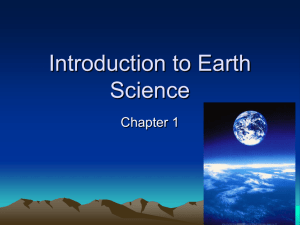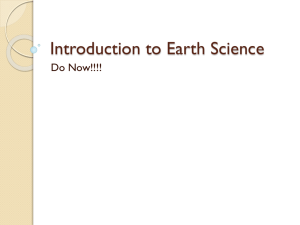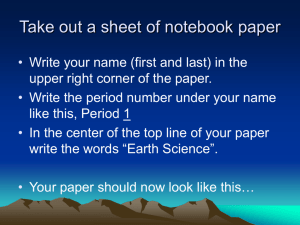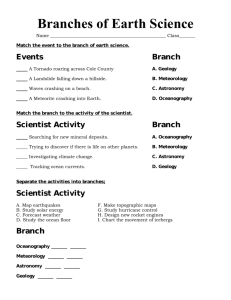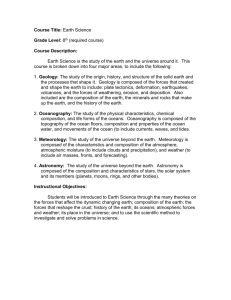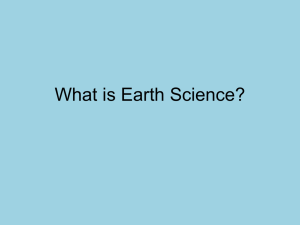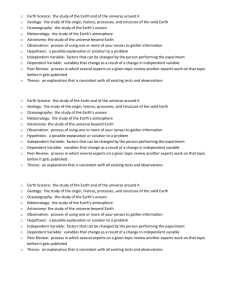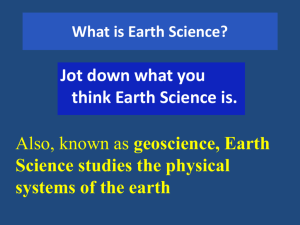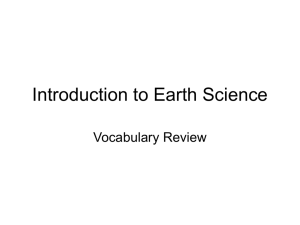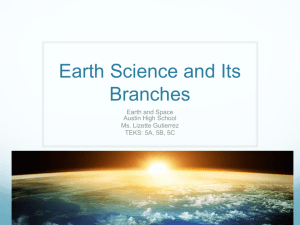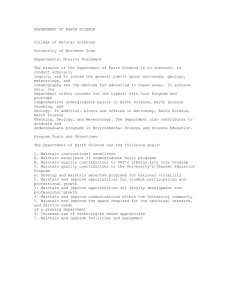Chapter 1: Introduction to Earth Science
advertisement
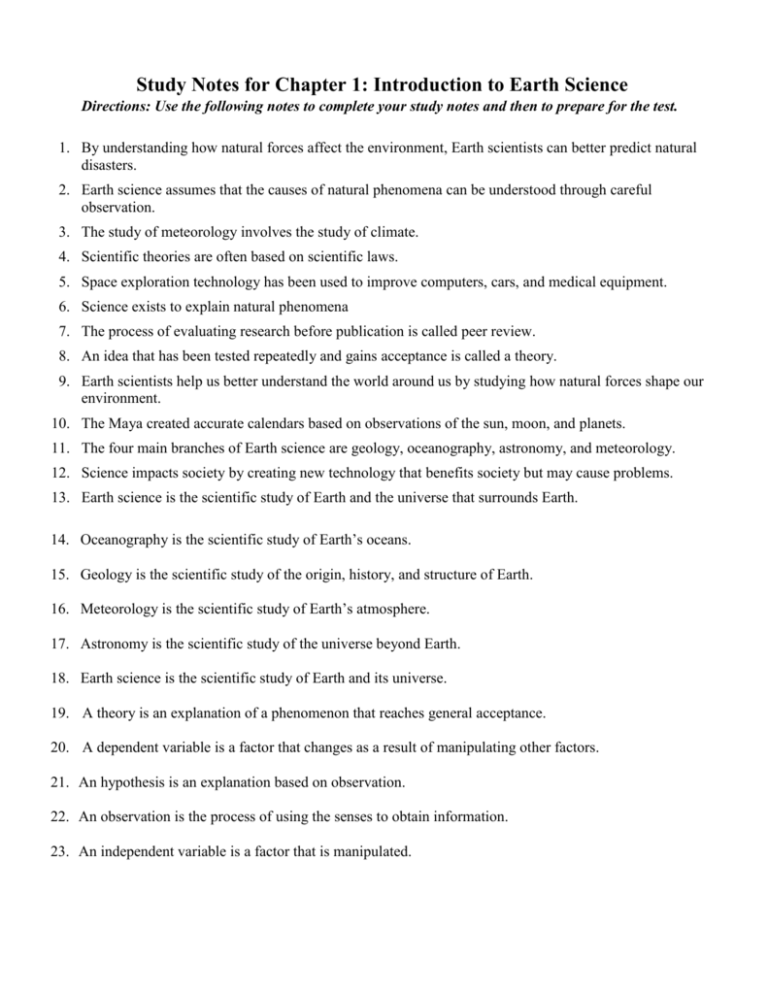
Study Notes for Chapter 1: Introduction to Earth Science Directions: Use the following notes to complete your study notes and then to prepare for the test. 1. By understanding how natural forces affect the environment, Earth scientists can better predict natural disasters. 2. Earth science assumes that the causes of natural phenomena can be understood through careful observation. 3. The study of meteorology involves the study of climate. 4. Scientific theories are often based on scientific laws. 5. Space exploration technology has been used to improve computers, cars, and medical equipment. 6. Science exists to explain natural phenomena 7. The process of evaluating research before publication is called peer review. 8. An idea that has been tested repeatedly and gains acceptance is called a theory. 9. Earth scientists help us better understand the world around us by studying how natural forces shape our environment. 10. The Maya created accurate calendars based on observations of the sun, moon, and planets. 11. The four main branches of Earth science are geology, oceanography, astronomy, and meteorology. 12. Science impacts society by creating new technology that benefits society but may cause problems. 13. Earth science is the scientific study of Earth and the universe that surrounds Earth. 14. Oceanography is the scientific study of Earth’s oceans. 15. Geology is the scientific study of the origin, history, and structure of Earth. 16. Meteorology is the scientific study of Earth’s atmosphere. 17. Astronomy is the scientific study of the universe beyond Earth. 18. Earth science is the scientific study of Earth and its universe. 19. A theory is an explanation of a phenomenon that reaches general acceptance. 20. A dependent variable is a factor that changes as a result of manipulating other factors. 21. An hypothesis is an explanation based on observation. 22. An observation is the process of using the senses to obtain information. 23. An independent variable is a factor that is manipulated.
